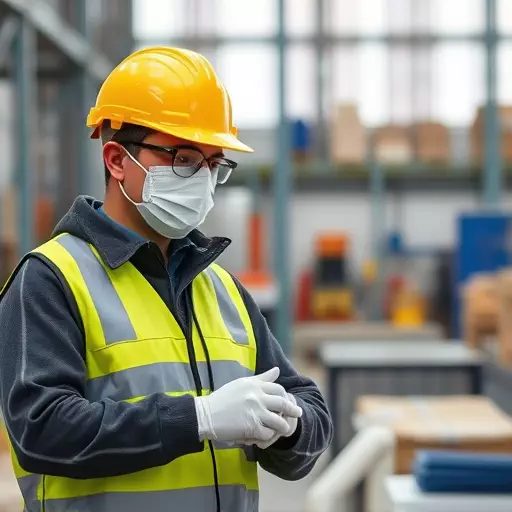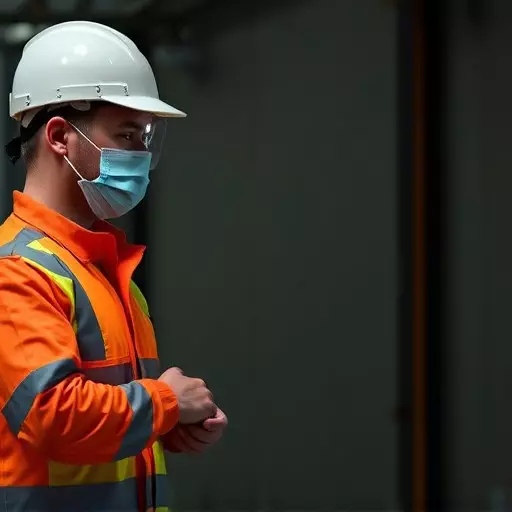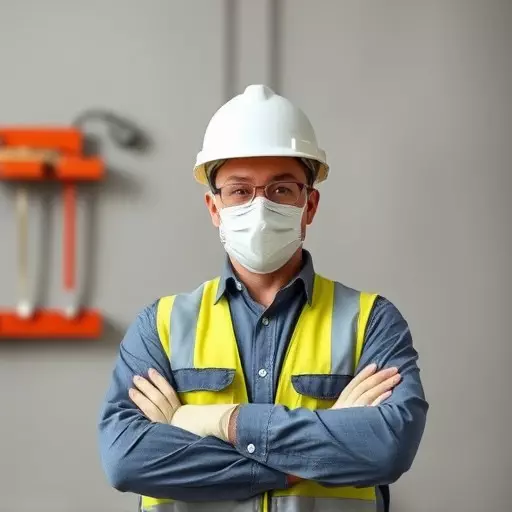Implementing robust occupational safety measures through proactive hazard assessment, continuous improvement, and personalized protective equipment (PPE) best practices is crucial. Organizations can significantly reduce risks and enhance worker safety by integrating lessons learned, structured training, consistent PPE practices, regular reviews, open communication, and industry-specific standards. Focusing on environmental factors, ergonomics, and comprehensive training further contributes to creating safer work environments that meet legal obligations and protect employees, an organization's most valuable asset.
“Unveiling the cornerstone of modern workplace wellness, this article delves into industrial hygiene—a vital discipline ensuring safe and healthy industrial environments. We explore foundational principles, drawing from real-world examples to illuminate their profound impact on occupational safety. From navigating regulatory compliance strategies to understanding personal protective equipment (PPE) best practices, each section offers practical insights. Discover how environmental factors, ergonomics, and comprehensive training play pivotal roles in fostering a culture of safety, leveraging lessons learned to enhance industrial hygiene standards globally.”
- Understanding Industrial Hygiene: The Foundation of Occupational Safety
- Occupational Safety Lessons Learned: Real-World Examples and Their Impact
- Safety Compliance Strategies: Navigating Regulations for Effective Risk Management
- Personal Protective Equipment (PPE): Best Practices for Ensuring Worker Protection
- Environmental Factors and Ergonomics: Creating Safe Workspaces
- Training and Education: Empowering Employees in Maintaining Industrial Hygiene Standards
Understanding Industrial Hygiene: The Foundation of Occupational Safety
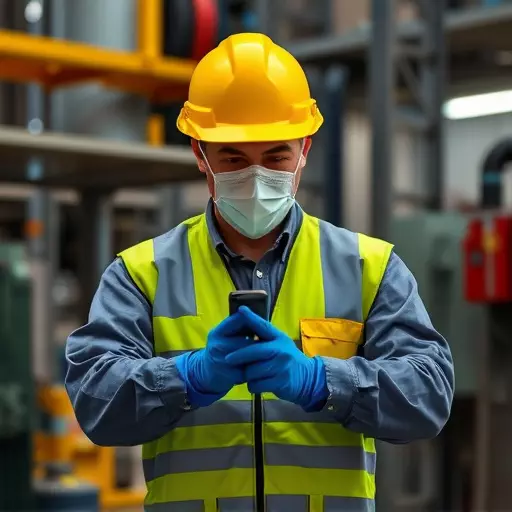
Understanding Industrial Hygiene is fundamental to fostering robust occupational safety measures. It involves a comprehensive approach to identify, evaluate, and control hazards within industrial settings, ensuring the well-being of workers. By integrating lessons learned from past incidents and adopting effective safety compliance strategies, organizations can create safer environments. This includes implementing personalized protective equipment (PPE) best practices tailored to specific tasks and hazards, thereby significantly reducing the risk of injuries and illnesses.
Industrial hygiene principles emphasize proactive hazard assessment, regular monitoring, and continuous improvement. It’s not just about reacting to incidents but preventing them from occurring in the first place. By fostering a culture of safety awareness and promoting adherence to established guidelines, organizations can create a robust framework that protects their most valuable assets—their employees.
Occupational Safety Lessons Learned: Real-World Examples and Their Impact
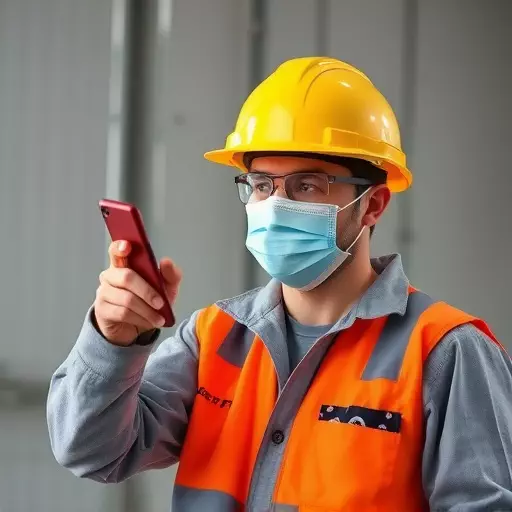
Occupational safety is a dynamic field, continually evolving with new challenges and insights. Examining real-world examples offers invaluable occupational safety lessons learned that can shape effective safety compliance strategies. From manufacturing plants to construction sites, each incident provides a unique opportunity for improvement. For instance, a recent case study highlighted the importance of comprehensive personal protective equipment (PPE) training when introducing new chemical processes. By implementing structured training programs and ensuring consistent PPE best practices, companies can significantly reduce risks and enhance worker safety.
These lessons emphasize the need for proactive measures, regular reviews, and open communication. Incorporating feedback from employees and industry experts allows organizations to adapt their safety protocols promptly. Moreover, sharing these experiences across industries fosters a culture of learning and collaboration, ultimately contributing to a safer working environment for all.
Safety Compliance Strategies: Navigating Regulations for Effective Risk Management
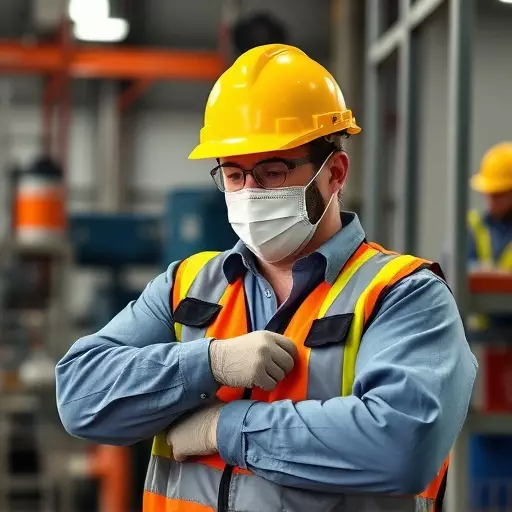
In ensuring a safe and healthy work environment, especially in industrial settings, implementing robust safety compliance strategies is paramount. These strategies serve as a compass, guiding organizations through the complex landscape of occupational safety regulations. By navigating these rules effectively, companies can mitigate risks, protect their workforce, and foster a culture of continuous improvement. One key aspect of this navigation involves adhering to personal protective equipment (PPE) best practices, which are crucial in safeguarding employees from potential hazards.
Safety compliance doesn’t merely involve checking boxes; it requires a deep understanding of industry-specific standards and regulations. Organizations must learn from past lessons to identify and address risks proactively. This proactive approach includes regular training sessions that educate workers on proper PPE usage, maintenance, and replacement schedules. By embracing these strategies, businesses can not only meet legal obligations but also enhance operational efficiency and employee morale, creating a more robust and resilient work environment.
Personal Protective Equipment (PPE): Best Practices for Ensuring Worker Protection
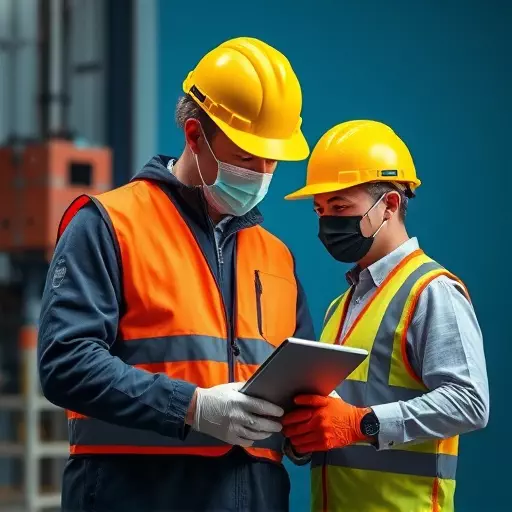
Personal Protective Equipment (PPE) plays a pivotal role in industrial hygiene, serving as a crucial component of occupational safety lessons learned. To ensure worker protection, it’s essential to implement best practices that go beyond mere provision of PPE. Safety compliance strategies should encompass proper training on equipment use and limitations, regular inspections to assess wear and tear, and personalized fit evaluations for each worker. This holistic approach ensures not just the availability but also the effective utilization of PPE, enhancing overall workplace safety.
Among the key PPE best practices are selecting equipment tailored to specific tasks and environments, encouraging workers to report any issues or discomfort immediately, and establishing clear protocols for maintenance and replacement. By fostering a culture that prioritizes both individual responsibility and organizational support for PPE use, companies can significantly reduce occupational hazards and align with industry standards for safety compliance strategies.
Environmental Factors and Ergonomics: Creating Safe Workspaces

In creating safe workspaces, environmental factors and ergonomics play a pivotal role in industrial hygiene principles. This includes managing elements like temperature, humidity, ventilation, and lighting to prevent heat stress, respiratory issues, or eye strain. Occupational safety lessons learned over time have highlighted the importance of maintaining optimal conditions to enhance worker comfort and productivity while reducing health risks. Safety compliance strategies should incorporate regular monitoring and adjustments to these factors, ensuring they meet established guidelines.
Ergonomics, the science of work-related activities and their effects on individuals, is equally crucial. Best practices for personal protective equipment (PPE) are integral to ergonomic considerations. Proper PPE selection, fitting, and use not only safeguard workers from physical and chemical hazards but also support good posture and reduce musculoskeletal disorders. By integrating these principles into workplace design and operations, organizations can foster a culture of occupational safety and create environments that promote employee well-being and productivity.
Training and Education: Empowering Employees in Maintaining Industrial Hygiene Standards
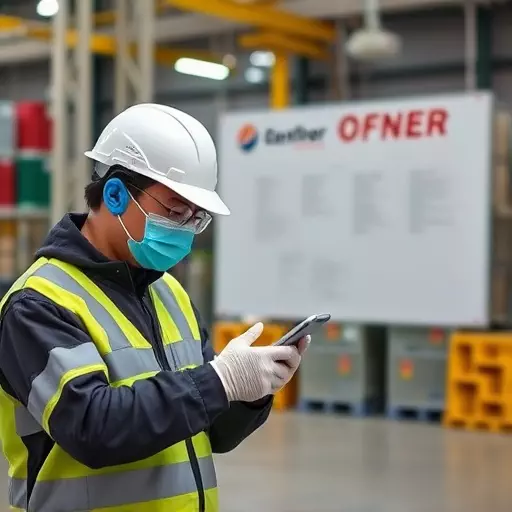
Training and education play a pivotal role in empowering employees to maintain industrial hygiene standards. By providing comprehensive occupational safety lessons, organizations can ensure that workers understand the potential hazards present in their work environment and know how to mitigate them. This includes equipping employees with knowledge about personal protective equipment (PPE) best practices, which are essential for safeguarding against various risks.
Safety compliance strategies should be integrated into the company culture through regular workshops, seminars, and hands-on training sessions. These programs not only update workers on the latest safety protocols but also foster a proactive mindset where employees take ownership of their safety and that of their colleagues. Such initiatives ensure that lessons learned from past incidents are implemented effectively, leading to a safer and healthier workplace.
